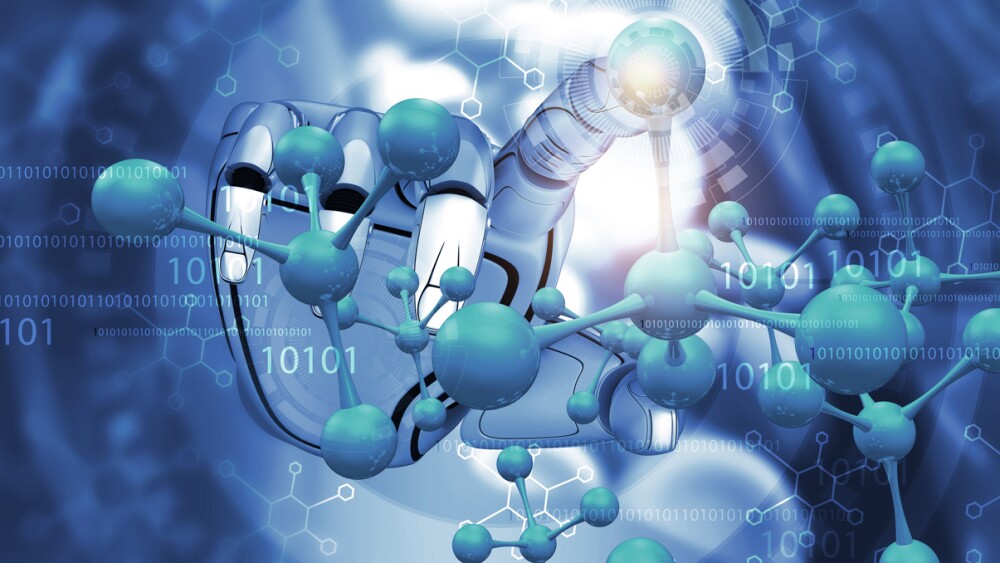Applications of the technology range from data collection to drug design to raising the alarm on product safety, but its adoption is also creating some anxiety.
As the biopharma industry explores the potential of artificial intelligence, use cases are quickly emerging. Companies are already looking to use generative AI—think ChatGPT—to optimize pharma R&D, from target discovery to drug development to regulatory approval to commercialization and postmarket pharmacovigilance.
Last July, Hong Kong–based Insilico Medicine claimed to be the first company to enter a Phase II clinical trial with a drug fully devised with generative AI. But as with any new and rapidly evolving technology, there are varying viewpoints on how and when to best use generative AI, and there is still plenty of skepticism.
Here are several ways in which the biopharma industry can apply generative AI, according to experts involved in helping to establish AI-based R&D protocols.
Improving Data Collection and Management
Biopharma researchers historically have had to rely on data scientists to hunt down information, and those data scientists “then have to figure out whether it’s the right data before they can start to do anything with it,” said Alister Campbell, vice president and global head of science and technology at R&D-focused software company Dotmatics.
Generative AI changes that equation by automating data collection. Though humans still have to curate and verify the accuracy of machine outputs, Campbell told BioSpace that generative technologies can help optimize leads in discovery and design by speeding up processes.
At the J.P. Morgan Healthcare Conference in January, Jean-Philippe Vert, chief research and development officer at AI biotech Owkin, said that using generative AI helps his company see all of the data in its search for treatments.
Drug Repurposing
Mike King, senior director of product and strategy, technology solutions at IQVIA, noted that Pfizer’s Viagra was originally tested for cardiac issues, but the most popular indication today, erectile dysfunction, was discovered by accident. Properly built algorithms could find additional indications to test for so companies don’t have to rely on sheer luck, he told BioSpace.
Matching Drugs to Patients
Rachael Brake, chief scientific officer of life sciences informatics startup Zephyr AI, said that AI can help match underserved patient populations with emerging compounds, reducing R&D time and cost in the process. “The value proposition of those novel therapies is that they’re solving current unmet need in the field,” Brake said. “Making a medicine that doesn’t actually solve a problem actually is not very valuable to anybody.”
Faster Discovery
Generative AI can automate the understanding of basic biological process. For example, King said, “you could train AI on broad-based biology, science and known protein shapes based on known amino acids, and have it put forward suggestions on how certain proteins would look based on certain structure.” That information can then be used to develop novel drug candidates.
Kimberly Powell, VP of healthcare at NVIDIA, suggested that a biopharma company could use Google DeepMind’s AlphaFold 2 protein-folding AI technology to predict protein structure, then NVIDIA’s MolMIM auto-encoder for small molecule drug discovery.
“The concept of algorithmic approaches and computational approaches to designing new drugs isn’t new,” Campbell said. “I think what has changed a lot is the methods have improved.”
Clinical Oversight
Brake also said that AI might be able to scan patient profiles as well as new literature to uncover emerging drug resistance to approved therapies. For example, AI can analyze tumor data “to understand why they may be considered sensitive or resistant to that particular therapy,” Brake said.
King added that drug safety is another area where AI can help parse the data. “The ability to combine structured and unstructured content to look for possible adverse events and product quality issues, that technology is live today,” he said. “That’s brought about a significant benefit in understanding product performance post-market, but also in identifying possible significant failure modes, where the volume of data isn’t necessarily high enough to trigger anything” through older pharmacovigilance methods.
Wariness Remains
Despite the excitement, the biopharma industry has plenty of skepticism and concern about generative AI.
There is a “stigma” to its use, Campbell said, in part because the work can be opaque, and peer reviewers and regulators need to see explainable methods. This can only be overcome if generative AI provides results that scientists can trust, he said.
The anxiety extends to job security. “Scientists are scared that they are going to be replaced by robots,” Campbell said. But at this point, he added, “we’re so early in the process that that’s not realistic.” The regular layoffs we see today in the biopharma space are a reflection of the current economic climate, not a shift in staffing strategies as a result of AI implementation.
Neil Versel is a former business editor at BioSpace. Follow him on LinkedIn or X.





